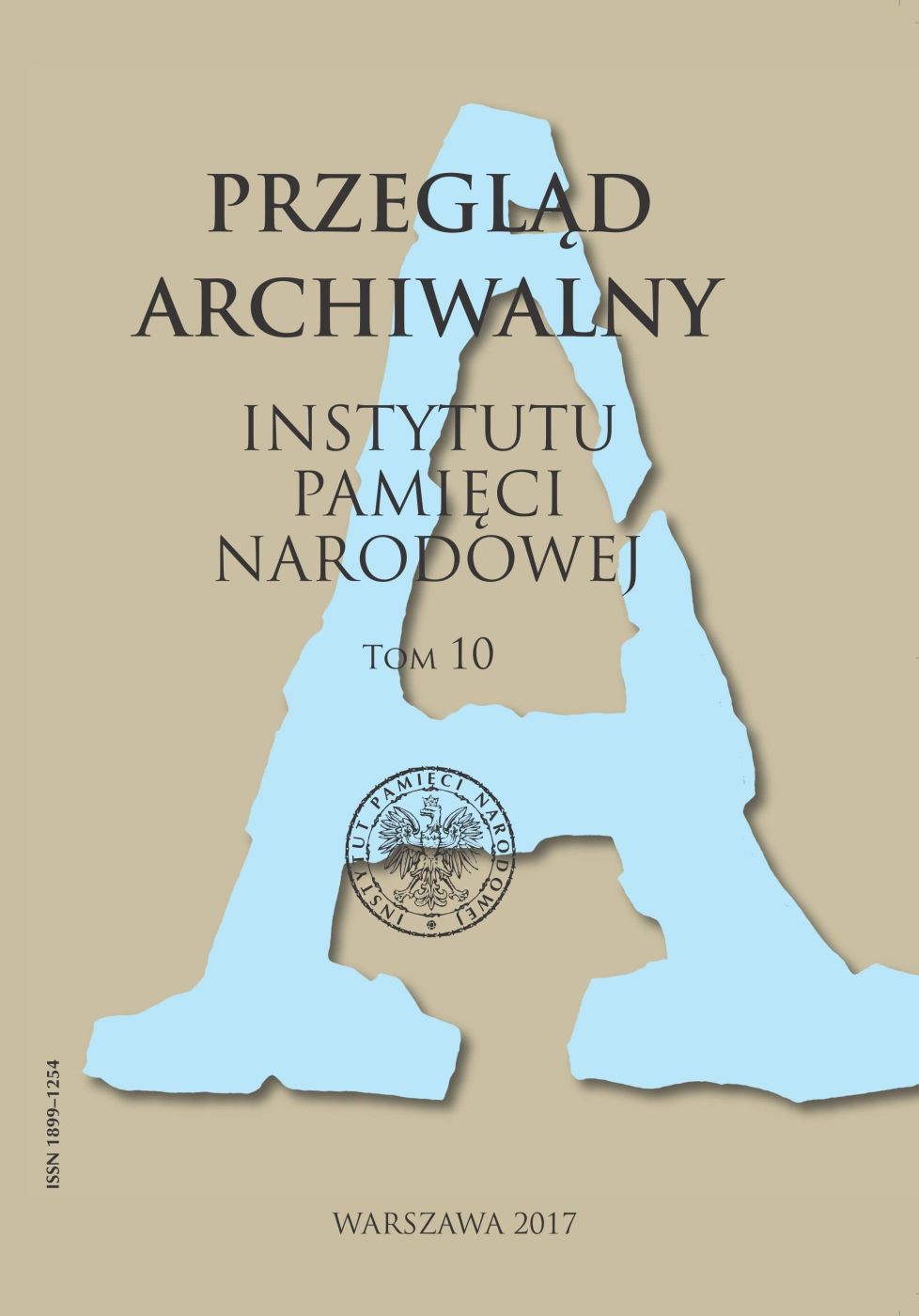Zimna wojna na polskiej prowincji. Zwalczanie działalności szpiegowskiej NATO w województwie bydgoskim w latach sześćdziesiątych w świetle dokumentacji kontrwywiadu cywilnego PRL
Przegląd Archiwalny Instytutu Pamięci Narodowej, No. 10 (2017), pages: 169–229
Publication date: 2017-12-29
Abstract
The aim of this article is to present the specifics of the documentation of the Civil Counterintelligence Service of the People’s Republic of Poland, currently stored in the Archives of the Institute of National Remembrance in Warsaw and Bydgoszcz. The Voivodship of Bydgoszcz served as an example to discuss how espionage activities carried out by Western diplomats were combatted in the 1960s. Basic issues related to the diplomatic status of military attachés and their exploratory and intelligence activities in the territory of the People’s Republic of Poland were discussed. Two contrary exploratory and intelligence operations carried out by Western military attachés in Bydgoszcz in the years 1965–1966 were described. They consisted in the observation of a military airport and airplanes, as well as the carrying out of an exploratory ride within the vicinity of Polish and Soviet military units based in the territory of several voivodeships. The article also presents the circumstances under which two Western attachés were captured, while taking photographs of the military infrastructure in Bydgoszcz in 1968. The formerly gathered experiences made it easier to detain both diplomats with photographic equipment and espionage material. After both diplomats had been captured, a propaganda campaign was carried out in the media. Its objective was to eliminate any inclination for the capitalist countries among the citizens by revealing the espionage activities of the Western diplomats in the People’s Republic of Poland.
Keywords
attaché • dyplomata • działalność szpiegowska • kontrwywiad • NATO • Służba Bezpieczeństwa • Bydgoszcz • USA attaché • diplomat • espionage • counterintelligence • NATO • Security Service • Bydgoszcz • USA
Most read articles by the same author(s)
- Piotr Rybarczyk, Dywersant (ideologiczny) w rodzinie. Rodzeństwo pisarza i dziennikarza RWE Tadeusza Nowakowskiego (1917–1996) w dokumentach organów bezpieczeństwa PRL , Przegląd Archiwalny Instytutu Pamięci Narodowej: No. 14 (2021)
- Piotr Rybarczyk, Uwięzienie ostatniego Kronenberga. Nieznane kronenbergia na w zasobie Delegatury IPN w Bydgoszczy , Przegląd Archiwalny Instytutu Pamięci Narodowej: No. 6 (2013)
- Piotr Rybarczyk, „Strajk głodowy” studentów Uniwersytetu Mikołaja Kopernika w Toruniu w dniach 8–9 listopada 1957 r. w świetle dokumentacji SB , Przegląd Archiwalny Instytutu Pamięci Narodowej: No. 8 (2015)
 Język Polski
Język Polski
 English
English


 PDF (Język Polski)
PDF (Język Polski)
